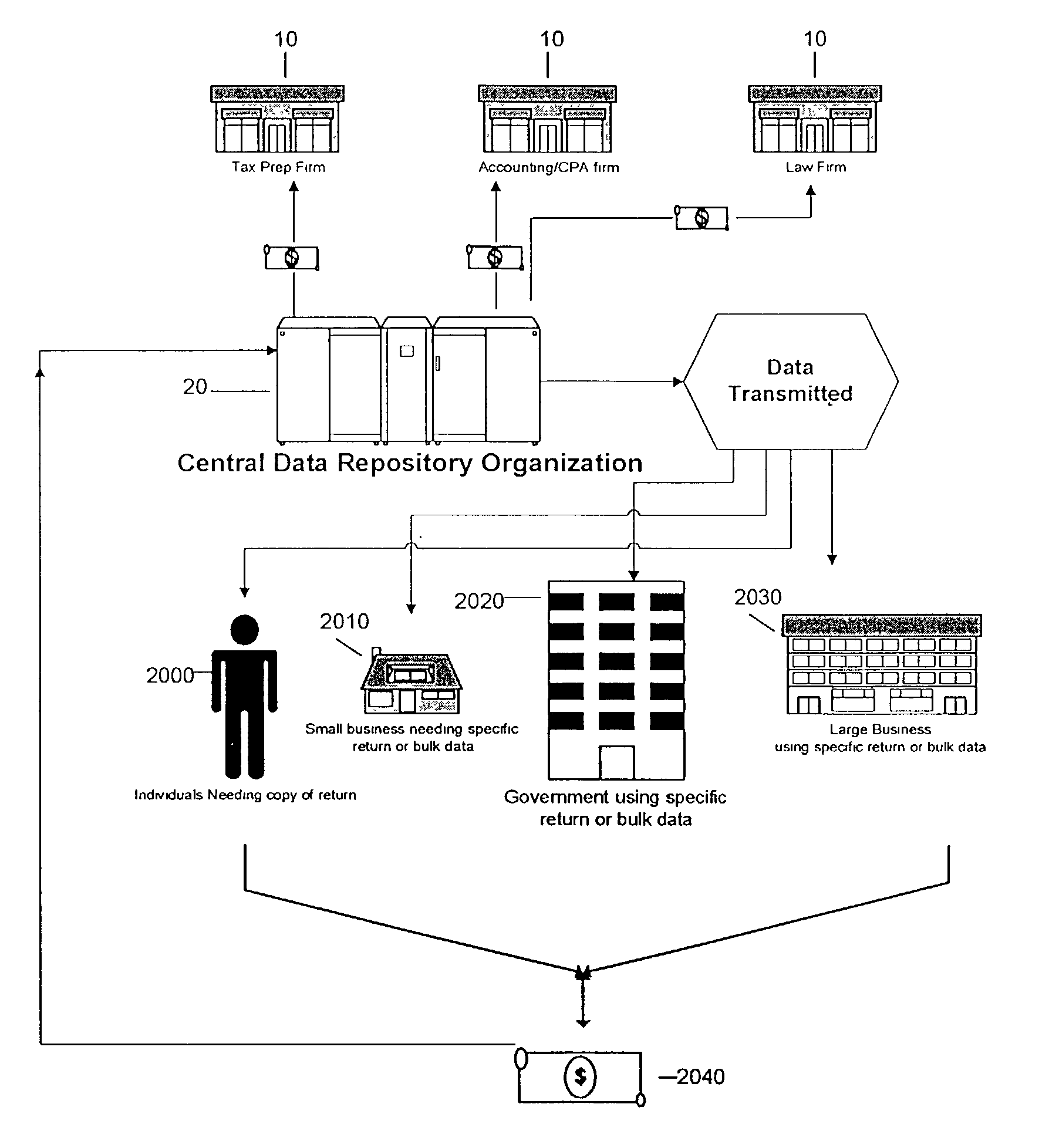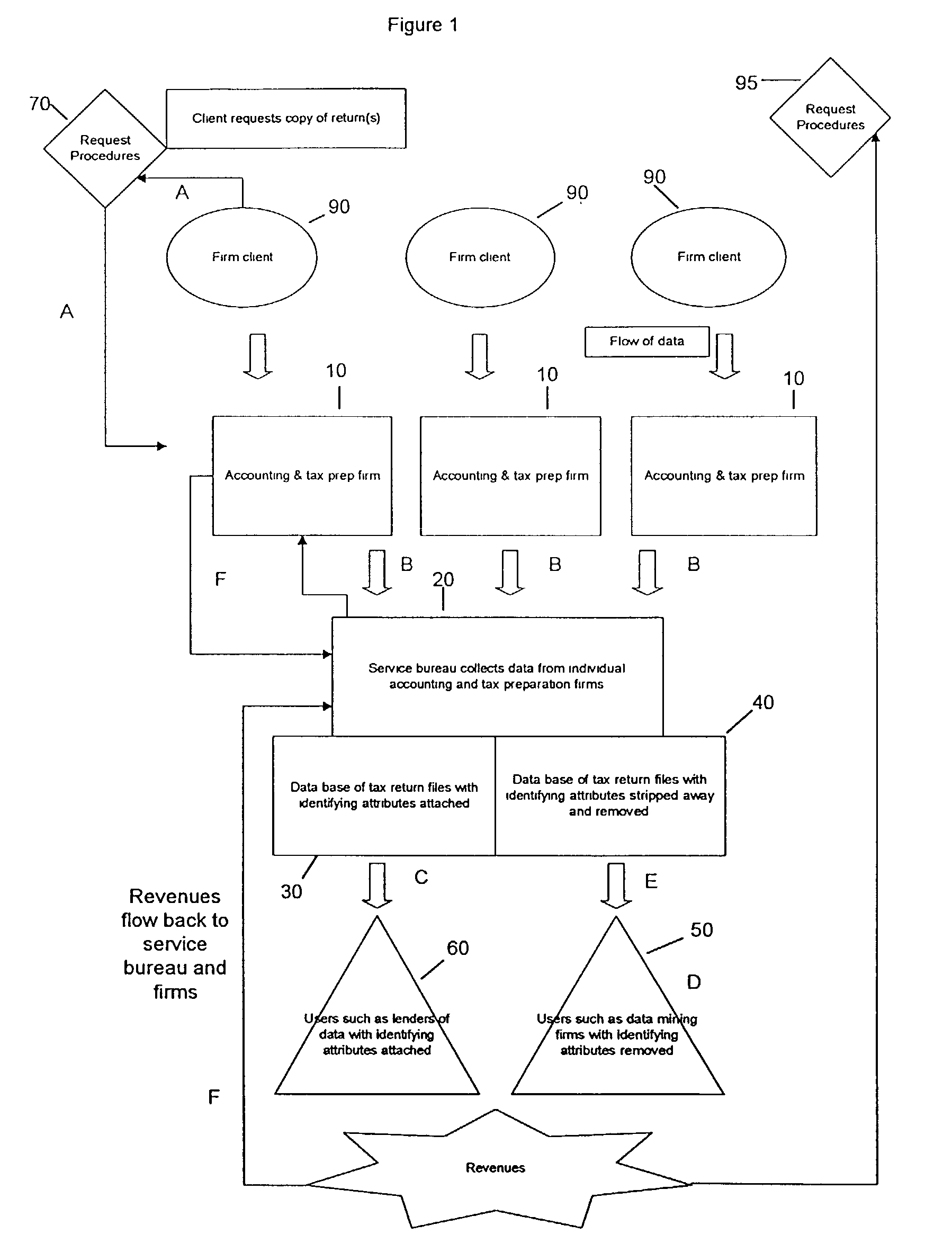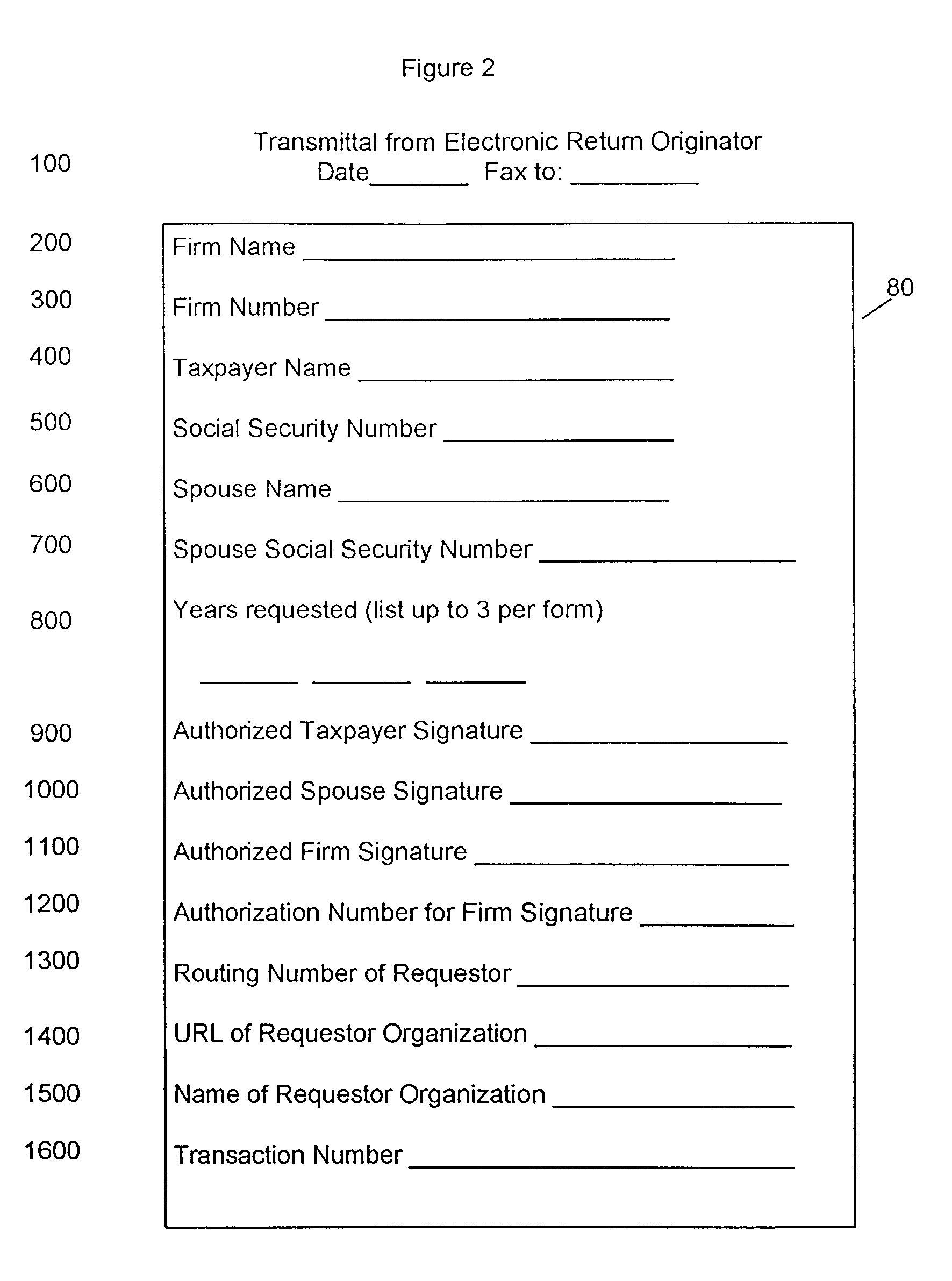Method and system for aggregation and exchange of electronic tax information
a technology of electronic tax information and aggregation system, applied in the field of method and system for aggregation and exchange of electronic tax information, can solve the problems of saving costs for users of such tax information, and achieve the effects of protecting confidentiality, allocating revenues and expenses, and adding to the commercial value of the individual
- Summary
- Abstract
- Description
- Claims
- Application Information
AI Technical Summary
Benefits of technology
Problems solved by technology
Method used
Image
Examples
Embodiment Construction
[0027]FIG. 1 shows data is to be submitted by participating accounting and tax preparation firms 10 in electronic format as simply a backup of the database of their respective tax preparation software. When received by the service bureau or data cooperative 20, the data is catalogued and stored in multiple formats. When received by the service bureau 20 data is stored in the format received. This data can be used for two purposes that provide advantages to accounting and tax preparation firms 10. First, a service bureau 20 can provide no cost or very low cost off site archival of data Backing up firm 10 data is a critical function that is frequently overlooked by smaller accounting and tax preparation firms. Secondly, a service bureau 20 can provide no cost or very low cost transmission of electronically filed income tax returns. Currently, most firms 10 pay a user fee to their software vendor for this service. Then, data is stored in detail with associated identifying characteristi...
PUM
 Login to View More
Login to View More Abstract
Description
Claims
Application Information
 Login to View More
Login to View More - R&D
- Intellectual Property
- Life Sciences
- Materials
- Tech Scout
- Unparalleled Data Quality
- Higher Quality Content
- 60% Fewer Hallucinations
Browse by: Latest US Patents, China's latest patents, Technical Efficacy Thesaurus, Application Domain, Technology Topic, Popular Technical Reports.
© 2025 PatSnap. All rights reserved.Legal|Privacy policy|Modern Slavery Act Transparency Statement|Sitemap|About US| Contact US: help@patsnap.com



